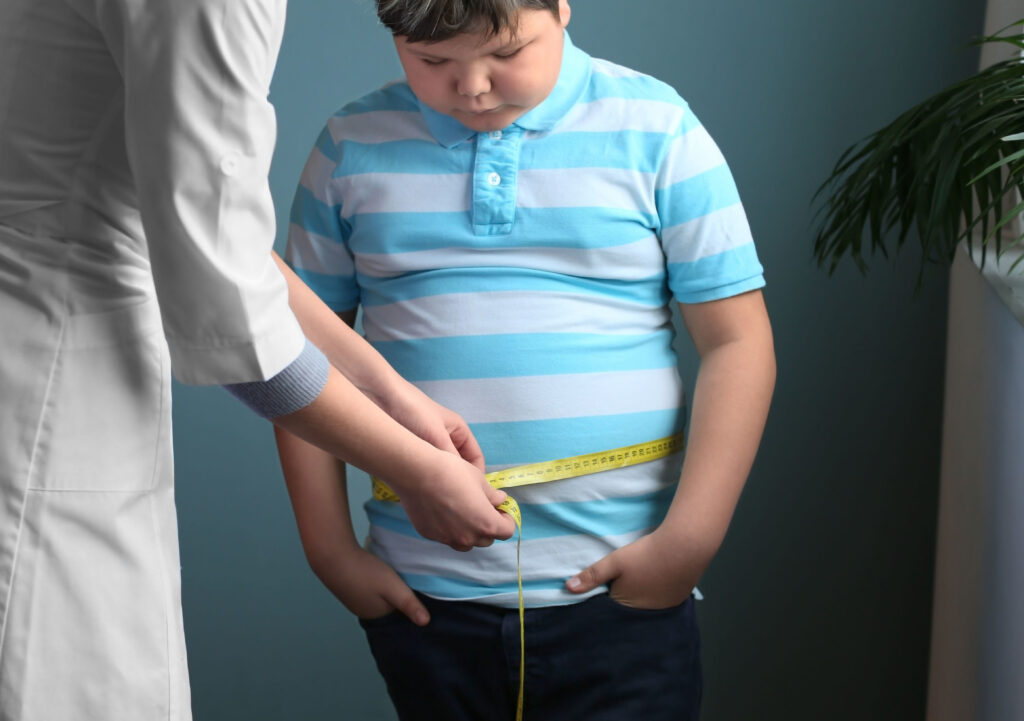Obesity in Children and Adolescents
According to the Centers for Disease Control and Prevention, childhood obesity is a serious health problem in the United States, where one in five children and adolescents are affected, putting them at risk for poor health. Unfortunately, childhood obesity is a rapidly expanding phenomenon impacting children in all avenues of life, including orthopedic health. Child obesity can also contribute to diabetes, high blood pressure, and high cholesterol. The extra pounds can lead to depression, poor self-esteem, and adverse social interactions. In fact, being overweight or obese is one of the most common reasons that children and adolescents are teased or bullied at school.
Simply put, obesity means a person’s body weight is more than it should be when considering the person’s height; it is frequently measured by Body Mass Index (BMI). A child’s BMI is considered obese if it is in the 95th percentile or greater, meaning that the child’s BMI is higher than 95% of all other children in his or her age range.
Orthopedic Conditions Related to Obesity
Having a high BMI has other implications; too much weight places excess stress on a child’s growth plates – the developing cartilage tissue at the end of the body’s arm, leg, and other long bones – which can lead to early arthritis, a greater risk for broken bones and other serious conditions.
Slipped Capital Femoral Epiphysis (SCFE) – one of the most common developmental conditions of the hip joint. SCFE occurs when the top or head of the femur bone slips off the neck of the thigh bone through the growth plate, causing trauma to the hip. Overweight or obese teens and pre-teens who are going through a growth spurt are at a greater risk of developing the condition.
Symptoms of SCFE include:
● Problems walking
● Limping
● Pain in the hips, groin, or around the knees
● Stiffness in the hip
● Less movement than usual in the hip
SCFE is always treated with surgery to stabilize the growth plate that slipped. Prior to surgery, the doctor will try to prevent any further slipping by encouraging rest and the use of crutches to avoid putting weight on the affected leg.
Blount’s Disease – a growth disorder that affects the growth plates of the shin bone most common in children younger than four and in teenagers who gain weight quickly. The disease causes the growth plate near the inside of the knee to either slow down or stop making new bone while the growth plate near the outside of the knee continues to grow normally, creating a bow-leg appearance.
Symptoms include:
● A bend in the leg that looks like the curve in the letter C
● Bowing below the knee affecting one or both legs
● Toes and feet pointing inward instead of straight
With Blount’s disease, early diagnosis is critical. Whether the disease starts in childhood or the teen years, the curve worsens if untreated. A specialist will recommend one of the following treatments based on age and the severity of the bend:
● Observation – close follow-up to monitor for potential progression
● Customized braces to support the child’s legs from the thighs to the toes worn day and night for several months to a year
● Surgery, like an osteotomy (bone cutting), performed after age four. Surgery could include adding staples, pins or tension band plating or removing or adding bone to the damaged tibia to straighten the leg
Flat Feet – weight can be a factor in the development of flat feet because of the extra strain on the arches, causing foot pain in the heel and arch areas. Flat feet can be asymptomatic, but occasionally require orthotic intervention or even surgery.
Preventing Childhood Obesity
The good news is obesity isn’t necessarily a permanent condition. Childhood obesity occurs as a result of various factors, most of which can be controlled with simple
interventions. Foods that are high in calories and low in nutrients, lack of physical activity, too much screen time, and poor sleep hygiene are all contributors. Other factors such as illness and stress can also affect a child’s weight. A combination of simple lifestyle changes associated with eating and physical activity are the first steps. A varied diet high in nutrient-rich foods, fruits, vegetables, and whole grains, in addition to a minimum of 30 minutes of daily activity can make a world of difference for your child’s physical and mental health.
It’s important to support your young child and set healthy examples. Family-based approaches are among the best ways to achieve a healthy weight for your child. Move more as a family, model healthy eating, set consistent sleep routines, and replace screen time with more family fun activities.
Specialists in Orthopedic Conditions Related to Obesity and Weight Gain
Since bones grow in size and strength during childhood, too much weight can seriously impact the growth and health of a child’s bones, joints and muscles. Excess weight can damage growth plates that regulate and help determine the length and shape of a bone at full growth or maturity. Serious conditions such as early arthritis, a greater risk for broken bones, SCFE, and Blount’s disease can result from excess weight. Our pediatric orthopedists are specially trained to work with children whose musculoskeletal system is rapidly growing and developing. If your child is struggling with orthopedic pain due to weight gain, please contact us at (973) 538-7700 or visit our website at pediatricorthopedics.com.




